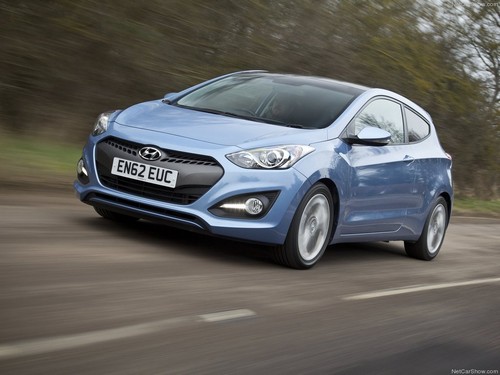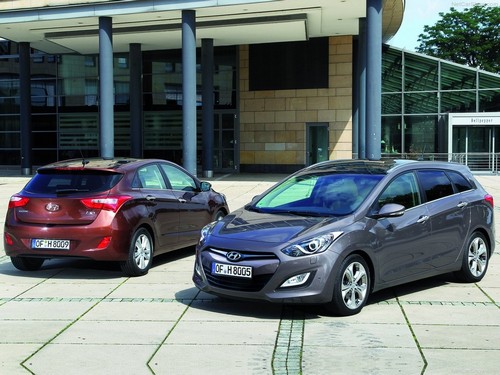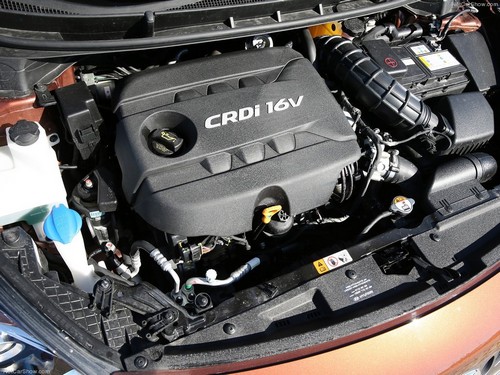Hyundai i30 2.gen. 2012-2017 – polovnjak, experiences, problems

Hyundai i30 2.gen. says only 5 years, a u 2014. were executed small redesign, which included styling grille and demonstration of new engine, including Turbo version with 186 horsepower.

Hyundai i30 2.gen. (GD) For the first time in the history of this model, manufacturer decided to introduce a model with 3 doors (i30 Coupe, from 2014). Wheelbase in i30 II has not changed, but the car has grown a few centimeters and has become much more spacious and roomy. Looking at this car back in time, seems to be quite outdated and without any imagination, but customers used cars and it does not matter. Hyundai has long ceased to be seen as an exotic brand and stands on all higher level.
Hyundai i30 II dimensions
| Dimension / width / height | 430-448/178/147 cm |
| wheelbase | 265 cm |
| Luggage capacity | htb 378-1316 l, KMB 528-1642 l |
Hyundai i30 2.gen. – Engines

Asortiman motora Hyundai i30 (GD) includes two units with the gas aspirated – 1.4 i 1.6. The latter is available in three versions: to (120 KS) and direct injection (135 KS), As with turbo charged 186 KS (i30 Turbo). In turn 1.4 before modernization engine family Gamma, after modernization – Kappa. Both developed by 100 HP and offer almost identical performance, with a slight advantage of newer. Those who like diesel have a choice of 1.4 horsepower with 90 horsepower (often used in fleets) i 1.6 CRDi is 110, 128 i 136 KS, also with a 7-speed DCT. All diesel engines are equipped with a particulate filter – fortunately without problems, except that the regeneration process takes place quite often, even every few hundred kilometers. Using floating flywheel is completely abandoned.
Hyundai i30 II petrol engines
| Engines | 1.4 MPI | 1.6 MPI | 1.6 GDI | 1.6 T-GDI |
| Volume | 1396 cm³ | 1591 cm³ | 1591 ccm³ | 1591 cm³ |
| fuel | gasoline | gasoline | gasoline | turbo gasoline |
| Max. fuel | 99 KM | 120 KM | 135 KM | 186 KM |
| Max. torque | 137 Nm | 156 Nm | 164 Nm | 265 Nm |
| acceleration 0-100 km / h | 13,0 s | 10,9 s | 9,9 s | 8,0 s |
| Max. speed | 182 km / h | 192 km / h | 195 km / h | 219 km / h |
| The average unmetered | 6,0 l / 100 km | 6,4 l / 100 km | 5,7 l / 100 km | 7,3 l / 100 km |
Hyundai i30 II Motor dizel
| Engines | 1.4 CRDi | 1.6 CRDi | 1.6 CRDi | 1.6 CRDi DCT |
| Volume | 1396 cm³ | 1582 cm³ | 1582 cm³ | 1582 cm³ |
| fuel | turbo diesel | turbo diesel | turbo diesel | turbo diesel |
| Max. power | 90 KS | 110 KS | 128 KS | 136 KS |
| Max. torque | 220 Nm | 260 Nm | 260 Nm | 280 Nm |
| acceleration 0-100 km / h | 13,5 s | 11,0 s | 10,9 s | 10,5 s |
| Max. speed | 170 km / h | 185 km / h | 197 km / h | 200 km / h |
| The average unmetered | 4,1 l / 100 km | 4,0 l / 100 km | 4,1 l / 100 km | 4,2 l / 100 km |
Hyundai i30 2.gen. – problems and failures
It is quite durable car with predictable labor costs. The most serious failures i30 relate to poor sealing of transmission to 1.6 GDI engines – oil can enter the part of the clutch and cause clutch slippage.
The appearance of corrosion on the tailgate and the overall low color fastness.
Problems in the use of full-power units, on the instrument panel lights up engine failure. The problem relates to the 1.6 CRDi turbo diesel, and wrong is a sieve in fuel tank, that is, on average, shut up every 30000-40000 km. It is recommended to clean each time service.
Povećano trešenje upravljača prilikom kočenja. Problems with brake discs. generally, durability of the original disc and plate is not the best. The Council is to invest in quality replacements.
Oil leakage from the piston or jigging system. at 1.6 GDI leaks from seal camshaft position sensor. In cars with start of production (after about 100 000 km) individual cases turning beds (usually solved under warranty).
Problems with unscrewing the nut wheels – incorrect screw nut on the stud. This is often the result of errors vulcanisates, mada priznajemo da se pri početnom uvrtanju nalazi veliki zazor između brezona i navrtke (This helps the screw nut angle). Fortunately, repair is not expensive.
Hyundai i30 2.gen. – service
| Supplies | gasoline engine | Diesel engines |
| Motor oil | 3,3 l (5W-30) | 5,2 l** (5W-30) |
| The oil in manual gearbox | 1,8-2,0 l, 75W-85 | 1,8-2,0 l, 75W-85 |
| cooling system | 5,8 l (glycol-based) | 6,9 l (glycol-based) |
| brake fluid | ok. 1,0 l, DOT 4 | ok. 1,0 l, DOT 4 |
| The timing mechanism | chain | chain |
| service intervals | . | . |
| Motor oil | every 30000 km or 2 years | every 30000 km or 2 years |
| Filter za polen | every 30000 km | every 30000 km |
| air filter | every 60000 km | every 60000 km |
| brake fluid | 2 years | 2 years |
| The timing mechanism | no periodic replacement | no periodic replacement |
Used Hyundai i30 2.gen. – summary
Boring nature of this car is recovered predictable costs održavanjai decent durability.
2. generation Hyundai i30 is a successful model that is worthy of interest if you are looking for a durable compact car. Serious failures are rare, mostly minor problems.
Hyundai i30 price polovnjaka - Review polovnjaka

Hi there, I am Mladen and I am an auto enthusiast. I started this blog years ago to help like minded people share information about latest cars, car servicing ideas, used car info, exotic cars, and auto technology. You will find helpful articles and videos on a wide variety of cars – Audi, Mercedes, Toyota, Porsche, Volvo, BMW and much more. Ping us if you have anything cool to share on latest cars or on how to make older cars more efficient, or just want to say hi!


